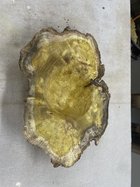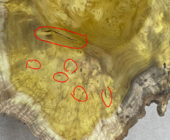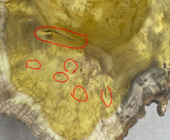The ugly blotch around the CA puzzles me. I get it, I just don't understand why anyone tolerates or risks it.
Gerald,
I agree that CA can make for a nasty looking surface if it soaks in where you don't want it to. But it's possible, at least in my experience, to keep it under control so that there is no impact on the appearance.
Here's what I do:
1. Seal the surface around the crack that's being filled. I use spray can shellac from Zinsser:
https://www.homedepot.com/p/Zinsser-12-oz-Clear-Shellac-Spray-408/100176744. A quick shot of shellac, wait a couple of minutes, and proceed to step 2.
2. Pack sawdust, coffee grounds, or other filler material into the crack.
3. Apply CA to the surface of the sawdust, and let it soak in. I use microtips on the bottle nozzle to help with applying only a small amount of ca and to help place it only where you want it to go.
4. Spray some accelerator to hasten the cure.
5. Sand the surface to remove any stray CA+Sawdust.
I've used epoxy occasionally with cracks, don't have much experience to compare to CA. But it seems harder to get it into small cracks, takes longer to cure, and leaves a bigger mess to clean up (just my experience, not saying it can't be used successfully by others.)





